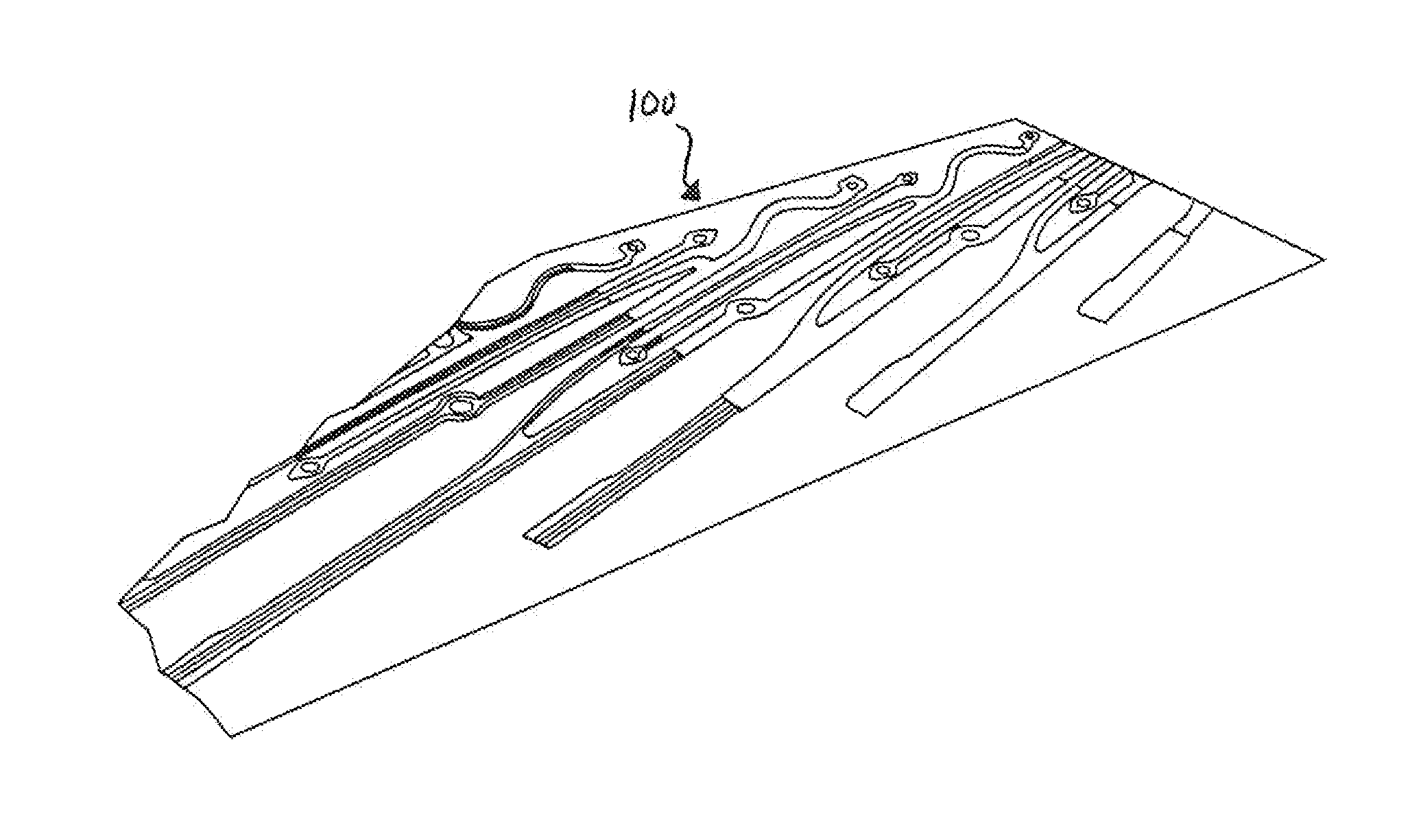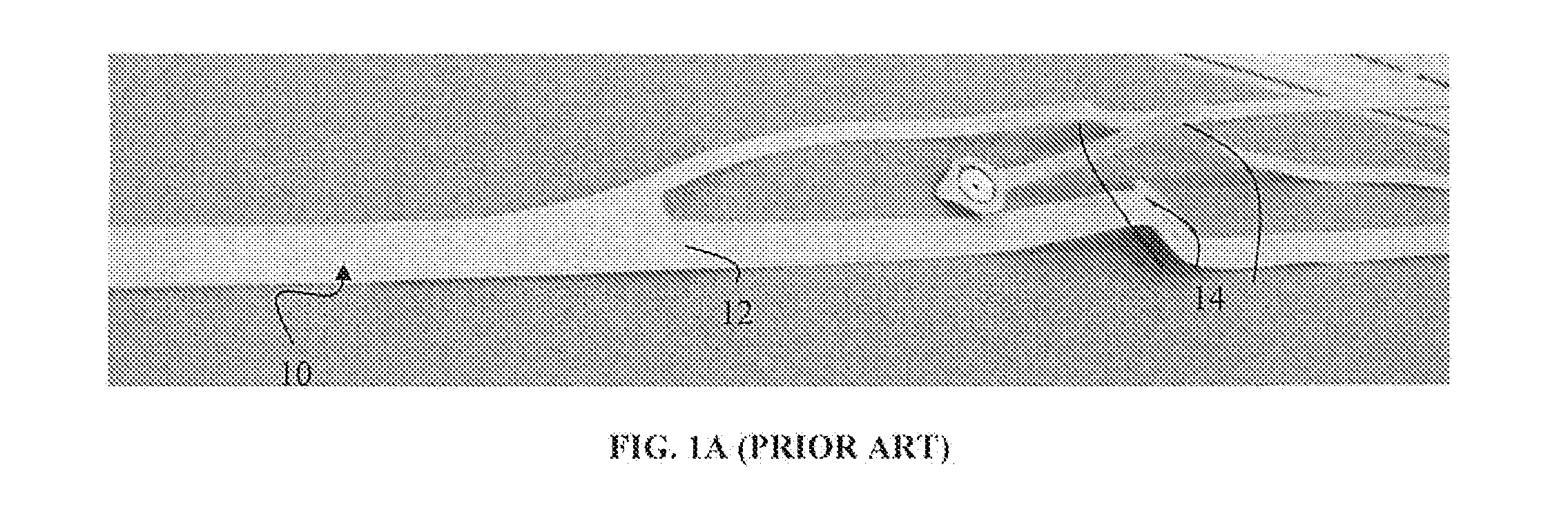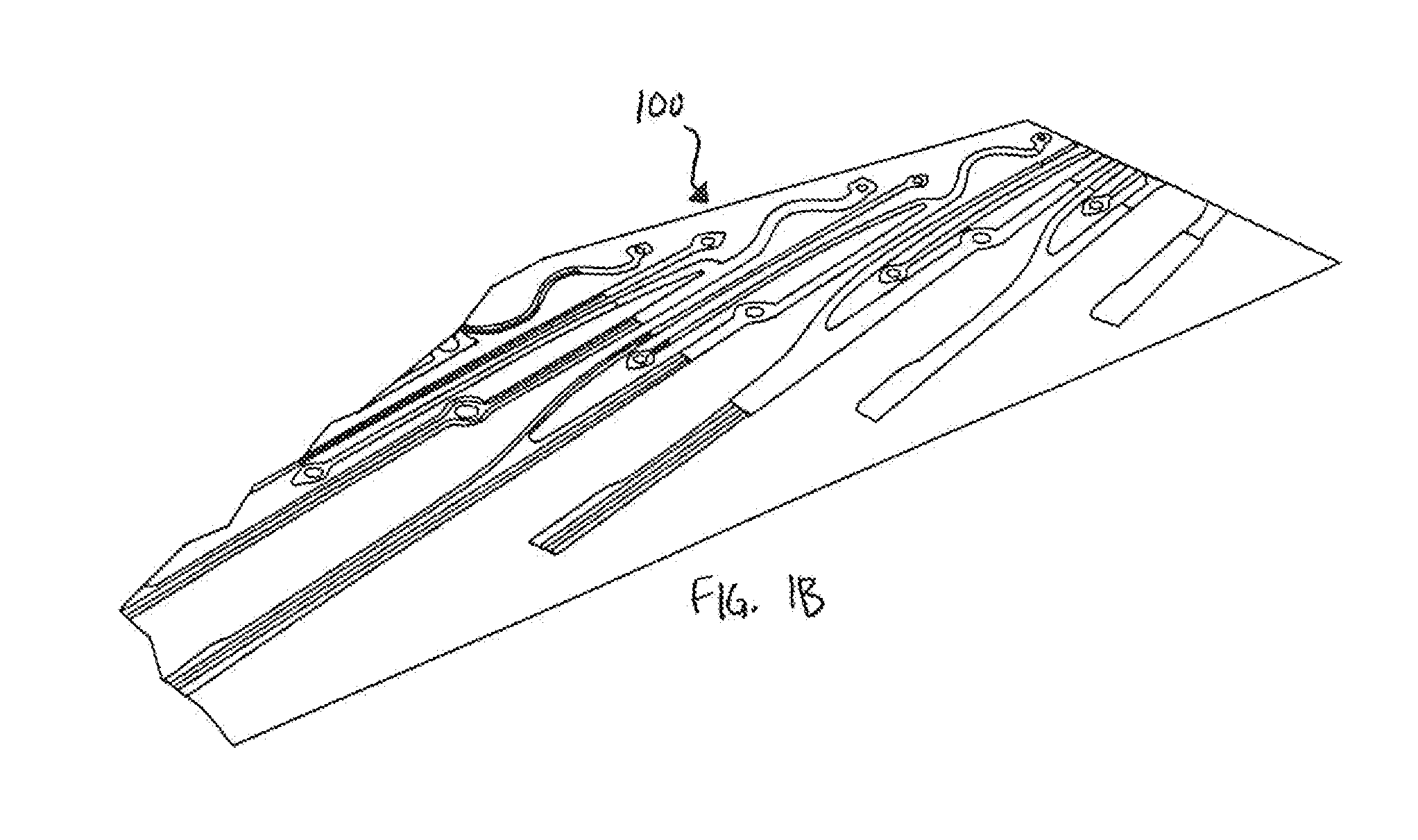Physical contact layer for body-worn leadware using selective deposition
a physical contact layer and leadware technology, applied in the field of flexible electronics, can solve the problems of irritating, scratching, chafing, etc., designed to be comfortable for users, and complicating instances, so as to save material cost, avoid scrapping unused parts, and save material cost
- Summary
- Abstract
- Description
- Claims
- Application Information
AI Technical Summary
Benefits of technology
Problems solved by technology
Method used
Image
Examples
Embodiment Construction
[0034]Referring generally to FIGS. 1B, 2 and 3A-3C, a set of flexible printed electronics 100 according to an embodiment are depicted. The set of flexible printed electronics 100 generally comprise individual circuit traces each having a substrate 102, a conductive layer 104, a dielectric layer 106, and a comfort layer 108. Of course, any particular embodiment can comprise greater or fewer layers, as the below-described embodiments are for illustration purposes only and are in no way limiting.
[0035]Substrate 102 comprises the base material onto which the conductive, non-conductive, and comfort components will be printed. Substrate 102 can be any suitable substrate in a sheet, roll, web, or similar structure. In an embodiment, substrate 102 comprises a fabric layer, such as cotton or polyester, woven, or non-woven. In other embodiments, substrate 102 comprises other flexible substrates such as polymer film such as polyethylene terephthalate film (PET), Polyethylene naphthalate (PEN),...
PUM
| Property | Measurement | Unit |
|---|---|---|
| conductive | aaaaa | aaaaa |
| soft | aaaaa | aaaaa |
| non-abrasive properties | aaaaa | aaaaa |
Abstract
Description
Claims
Application Information
 Login to View More
Login to View More - R&D
- Intellectual Property
- Life Sciences
- Materials
- Tech Scout
- Unparalleled Data Quality
- Higher Quality Content
- 60% Fewer Hallucinations
Browse by: Latest US Patents, China's latest patents, Technical Efficacy Thesaurus, Application Domain, Technology Topic, Popular Technical Reports.
© 2025 PatSnap. All rights reserved.Legal|Privacy policy|Modern Slavery Act Transparency Statement|Sitemap|About US| Contact US: help@patsnap.com



